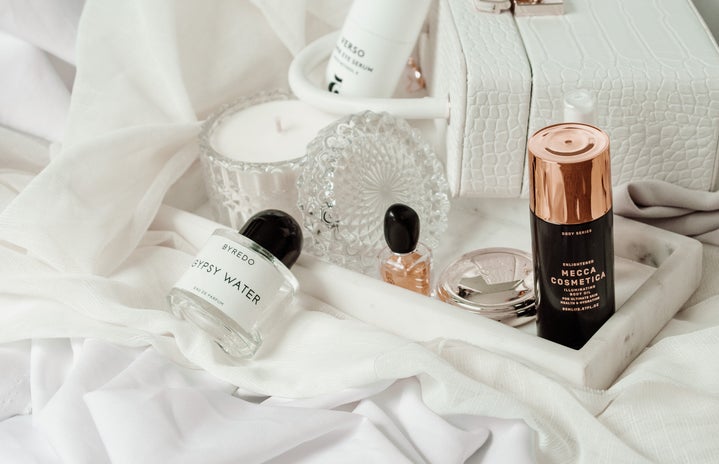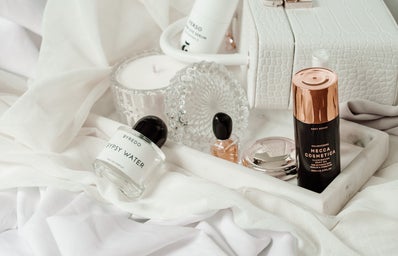This article is written by a student writer from the Her Campus at Brown chapter.
Global Beauty Trends: It’s in the Eye of the Beholder
We tend to think of beauty as a fixed concept – a kind of ‘subjective universality’, to cite Kant. Indeed, a norm has emerged in the way that we tend to talk about beauty today, even as ‘beauty’ is an inherently biased category.
To dispel certain mythologies of what makes someone beautiful – and particularly according to Western, American standards – I’ve compiled a list of global beauty trends. Is tanned skin the ideal? Should we pine after blonde hair? Where is it acceptable for us to be pierced? These are all questions that a panoramic look at “pretty” will complicate.
In many African cultures, for instance, body modification is seen as beautiful and natural; nose and lip piercings are particularly common among women in rural tribes. As remarks reporter Arieanna Garica, “Where a nose ring might get you a husband in Africa, it could cost you a job in America.” A non-Occidental examination of beauty thus throws ‘socially acceptable’ into perspective. Consider the trend of ‘scarification’ (done by burning, cutting, etc.), enacted by men and women alike as a mark of beauty and a rite of passage into society. While the images below will certainly not appear in the context of New York Fashion week, they are emblems of beauty for a number of (particularly Sub-Saharan) African cultures:
Let us move farther East to consider what makes someone ‘beautiful’ in Asia. While most American women are obsessed with tanning- even going so far as to purchase fake tans that can, on occasion, render the tanner a tragic shade of orange (recall Ross Gellar’s tanning mishap in Friends) – Japanese ideals of beauty emphasize the opposite standard. According to Mume Yoshiwara, a reporter for Marie Claire, “Lustrous black hair and impossibly white, porcelain skin mark the struggle of the narrow ideals of Asian beauty.” Chinese ideals are similar, advertising shampoos that: “characterize…animated and lively hair as strong, shiny, long and soft.” Pale skin is equally important in China, as reflected by the fad of using parasols and umbrellas to ward off sunlight from spotless skin.
VS.
How does beauty figure into the South American psyche? Brazil is fast emerging as a major leader of beauty trends, considered by Stylist magazine to be “the world’s most beautiful country.” Indeed, according to Stylist, Brazilian women spend 11 times more of their annual income on beauty products than UK women. What makes a Brazilian beauty? In contrast to the thin, porcelain standard explored in Japan and China, Brazil idealizes tanned limbs and feminine curves. As the magazine asserts, “Women go to the beach to be seen. They don’t want to be skinny- they want to define every part of their body.” Notions of ‘tropical sensuality’ dictate ‘pretty’ here, emphasizing curly (yet manageable) hair, that battles the heat via blow-dries and moisturizing hair masks. Blonde hair is the current obsession, given that Brazil is a country of natural brunettes. As always, there is something appealing about the one who stands out.
Some of this is starting to hit closer to home. Let’s examine beauty trends in America, as influenced (or not) by Asian, African and South American ideals. According to the Allure American Beauty Survey, women are conflicted about curves. Though 73% percent of women say that a curvier body type is more appealing now than ever before, 85% of women say they want narrower hips. Even more startling, 97% of women said they wanted to lose weight. It seems like we, as a country, can’t make up our minds: Are we proud of our curves, or ashamed of them? Is piercing attractive (if only in moderation)? Or should nose-rings and navels be relegated to the socially awkward?
Despite what we may say, America is deeply influenced by the rest of the world, and especially when it comes to beauty. The Rules of Attraction are constantly shifting, vacillating year-to-year, and as always, they remain in the eye of the beholder. Kant described beauty as a ‘subjective universality’, but in point of fact, can the subjective ever be universal? Isn’t it true that the grass is always greener on the other side?
As a bi-racial woman with dark-brown curls and a curvy butt, I’ve often wanted to be blonde and thin. But as it turns out, America the ‘melting pot’ has various different conceptions of beauty. We are a diverse country, with subsequently diverse standards of beauty. Contrary to popular belief, I would say there is a ‘beauty’ category for just about anyone out there.
I refer to my previous article: “Think Yourself into Sexy”. Just as confidence, in my mind, dictates a “Bedroom Ready Body”, so too does it dictate the beautiful. Choose your beholder. Learn to love your own grass – all the while considering global perspectives – and that’s when you become radiant.
“Body Modification: Tribal and fashion”, http://www.afropunk.com/profil…
Mume Yoshiwara, “Beauty, Redefined”: http://www.marieclaire.com
Mume Yoshiwara, “Beauty, Redefined”: http://www.marieclaire.com/hai…
“Chinese ideals of female beauty”, http://en.wikipedia.org/wiki/C…

